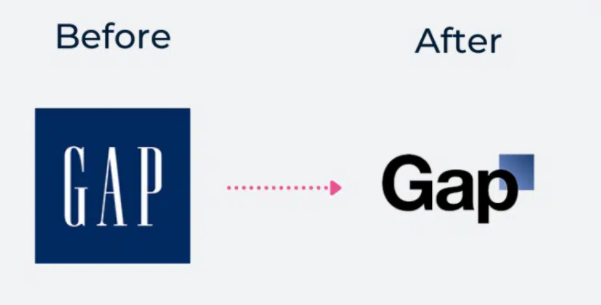Part
01
of one
Part
01
Analysis of Rebranding Benefits, Risks, Cost and Timing
Key Takeaways
- Benefits of rebranding include attracting new customers, achieving new goals, increasing customer engagement, and consolidating a market presence.
- Risks in rebranding include the chaos of large-scale change, the possibility of alienating customers, expending significant resources, and not addressing the factors which have precipitated the desire to rebrand.
- A brand refresh typically costs $60,000 to $90,000+ and the timeline is typically about 3 – 4 months.
- A brand reboot ranges from $100,000 to $180,000 and the timeline is typically six to eight months. The reboot includes comprehensive research and strategy.
- A brand overhaul can cost from $200,000 to $300,000+ and typically takes 9 – 12 months.
Introduction
This research opens with the reasons why a business might consider rebranding, and then describes the benefits, the risks, and potential mitigating strategies of rebranding.
The three levels of rebranding exercises are described, along with the range of costs and times expected for an average project. A case study of the rebranding of Dunkin' provides some specific activities and their results.
Rebranding
There are several reasons why a business might consider rebranding. These include
- Their brand position was never defined.
- The business has changed its focus, direction, or name.
- The current positioning does not represent the company effectively.
- Company mission/values have changed.
- Competition has moved in, and the company no longer stands out
- Their product line has changed
- Customer demographic has changed, and it no longer speaks to new customer needs.
- Technology has shifted, making products or systems obsolete
- Mergers and acquisitions
- A negative public image
Benefits of Rebranding
Attracting new customers.
- If the company’s product or service has been in the marketplace for an extended time, then its image or brand message can begin to feel stagnant.
- The business may even become irrelevant to its targeted demographics. It is easier to change a company’s goals and mission over time than it is to deal with customers when you continue to offer the same thing.
- Rebranding a company’s image attracts new prospects while sparking interest from your current base.
Achieve new goals.
- Rebranding gives a company a reason to shift the focus of its organizational efforts.
- There is always a need to improve its existing product lines or develop new ones.
- Setting new goals makes it possible to engage its employees as brand ambassadors, which can energize a stagnating workforce.
Increase engagement levels with your customers.
- Rebranding provides an opportunity to create renewed interest in what you offer.
- The process of rebranding allows a company to communicate on multiple platforms about its new value proposition.
- Encouraging social media communities to share and discuss provides new ways to show people how its changes will benefit them in the future.
Can be minimally invasive
- One of the most costly mistakes a company can make when rebranding is to change everything when that is unnecessary.
- There will be elements of the organization that do not require a new identity.
- Just refreshing a color or changing a name, or even just the way it looks may be all that is needed.
Consolidate market presence.
- If the company is offering several products or services, each under a unique brand name, it can be confusing for some customers if they want to understand the overall organization.
- Rebranding allows a company to create a single brand for every business it operates.
Change the employees' internal perspective.
- If the internal perspective of the company could benefit, rebranding may be a good option.
- That is why many organizations have chosen to take a different name and shift their message.
- For example, AuctionWeb rebranded itself as eBay. The Kansas City Wizards soccer team became Sporting KC. Marathon changed its name to Snickers. Opal Fruits became Starburst.
- These changes can shift the perspective on the services provided.
Risks in Rebranding
Change, Confusion, Chaos
- People in today's world are already anxious, fearful, and uncertain. That is never a good time to impose a new change. If a company were to change its message now, consumers may not react well, especially if they are as confused instead of encouraged by the change.
- "Change is scary, mainly because no one knows for sure what the end result will be. People can become easily confused or frustrated whenever change occurs."
- To mitigate this risk, the company must develop a communication strategy and plan for its implementation.
Losing Existing Customers
- Research has shown that roughly 75% of people develop their identity through the brands that they use.
- If the company goes through a rebranding process, then it can literally change the way a person perceives themselves.
- Even if the company's branding strategy is correctly built and implemented, it can result in the loss of customers, simply because people do not like change.
Resources
- Branding exercises are never cheap. Few companies have the requisite skills internally.
- The company will need to dedicate both financial and human resources to developing a creative rebranding strategy, graphic design, new content, and employee training, as well as marketing and advertising campaigns.
- For that reason, a company must mitigate this risk by being clear about the goals it has for this process before jumping in. If the goals are not clear and supported by the company as a whole, then it could be "throwing good money at a bad idea for a long time."
Research, Research, Research
- The stories of companies that decided to rebrand without understanding their customer base are legion.
- The Gap failed to understand its customers' emotional attachment to its logo. Their rebranding effort lasted six days before they went back to the original logo.
Suspicion
- Rebranding can be met with suspicion by customers, who understand there are reasons other than just changing the message.
- Comcast, an American cable operator company, had one of the most hated customer service processes in the United States.
- They rebranded as Xfinity, hoping to leave the negative experiences with the brand behind. Unfortunately, they did not allocate any resources to fixing their customer service challenges.
- Experts that analyzed the results said "Restore your reputation alongside spending money on changing a brand design. Or, simply focus on listening to your customers. Trying to get away from a bad reputation by making drastic changes in your visual identity has never worked out!"
Time and Cost of Rebranding
- According to Ignyte Marketing, most small businesses can expect a rebranding exercise to cost $100,000 to $180,000 and take six to eight months to complete.
- Studies show the average business spends about 5 percent of its revenue on marketing. Using those figures, an average rebrand will likely cost anywhere between 10 and 20 percent of a company's marketing budget.
- The factors that can affect the time and cost include:
- How long the brand has been around
- The number of sub-brands
- Number of employees
- Number of customers
- Geographic reach — domestic or international
- Competition
- Top business goals and when they need to be met
- Problem to be solved.
- There are three potential levels in a rebranding exercise.
- Brand Discovery
- Visual Identity
- Corporate Stationery
- Website
- Copywriting
- Photography
- The budget is typically $60,000 to $90,000+ and the timeline is typically about 3 – 4 months.
- The size and complexity of the organization's website needs are the variables that will determine the cost and duration of the project.
- A brand reboot is recommended for companies that are dealing with "the systemic issues that typically accompany business growth and/or age.
- A brand reboot typically includes elements such as:
- Customer Research
- Brand Audit
- Brand Strategy
- Naming and Tagline
- Brand Identity
- Corporate Stationery
- Website
- Copywriting
- Photography
- Marketing Collateral
- The major difference between a brand refresh and a brand reboot is that the reboot includes comprehensive research and strategy.
- The budget ranges from $100,000 to $180,000 and the timeline is typically six to eight months.
- The brand overhaul is for companies with wide-ranging and complex challenges. These companies are often large established and complex global enterprises.
- A brand overhaul includes:
- Internal Brand Research
- Customer Research
- Brand Audit
- Brand Strategy & Positioning
- Brand Architecture
- Naming and Tagline
- Brand Identity
- Corporate Stationery
- Website
- Copywriting
- Photography and Video
- Marketing Collateral
- Brand Guidelines
- Brand Rollout
- The budget for a Brand Overhaul ranges from $200,000 to $300,000+ and typically takes 9 – 12 months.
Level 1 — The Brand Refresh
The brand refresh is the most basic branding level and is best for businesses with relatively simple needs.
Level 2 — The Brand Reboot
Level 3 — The Brand Overhaul
Case Study — Dunkin'
Reason
- Dunkin' has been providing the best coffees and donuts for over 50 years. The company decided it was time for a change.
Challenge
- The challenge for the team was to revamp the brand in a way that ensured the distinctiveness remained intact.
Actions
- The name was changed from Dunkin Donuts to Dunkin'
- The tag line was changed to "America runs on Dunkin'"
- Because Dunkin’ is associated with its signature Frankfurter font and pink and orange colors, the team "developed a custom update of Frankfurter font called Dunkin Sans by adding a serif inspired by Dunkin’s use of Souvenir in the 1970s." This melding of the newly customized typography and the old colors produced a "new presentation of the brand by giving a modern twist to the former logo."
Result
- “America runs on Dunkin” garnered over one billion impressions in the first 24 hours of the release which helped Dunkin’ become a US trending topic on Twitter.
- Press coverage was designed to get Dunkin' on “First Name Terms with America”. This resulted in "coverage that included The Late Show with Stephen Colbert on CBS, The New York Times, Esquire, The Guardian, Buzzfeed, Forbes and more."
- The Propane Agency estimates that Dunkin' spent more than $100 million on the campaign.
Research Strategy
For this research on rebranding, we leveraged the most reputable sources of information that were available in the public domain, including six different creative marketing agencies reports (Ignyte Brands, Brandon Gaille, Klint Marketing and more.)

